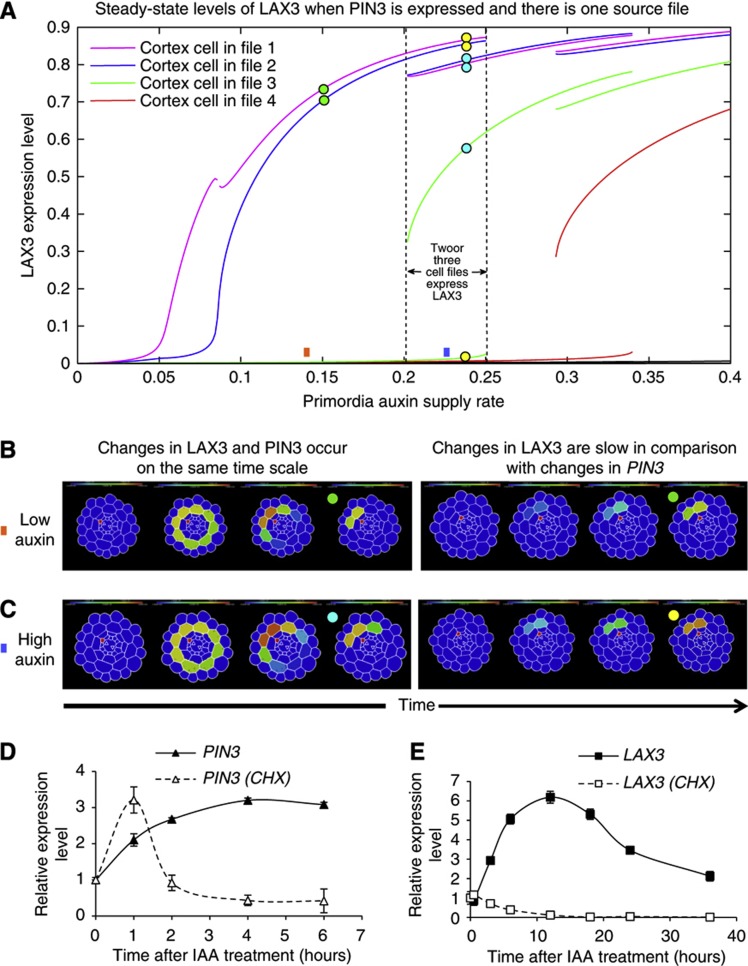Figure 6.
PIN3 and LAX3 are sequentially induced to promote lateral root emergence. (A) Steady-state solutions to model version two (wherein both LAX3 and PIN3 are expressed, see Figure 5E and Table I) for various LRP auxin supply rates. For a supply rate within a certain range, LAX3 expression is restricted to just two cell files (as indicated). Within this range, the levels of LAX3 in other cell files remain low (compare with analogous plots obtained for model version one shown in Supplementary Modelling Figures M8–M10). For slightly higher supply rates, LAX3 can be expressed in three cell files at steady state. Overlap between the two regions corresponds to bistability. (B, C) Visualisation of model dynamics for various auxin supply rates (as indicated by square boxes) and LAX3 induction rates. Together, these determine the steady state to which the model tends (as indicated by the coloured circles). (B) If the auxin supply rate is chosen so that the model has one stable-steady state, and LAX3 and PIN3 are induced by auxin at the same rate, then LAX3 expression initially spreads circumferentially before being restricted to two cell files. (C) If the auxin supply rate is chosen so that the model is bistable, then LAX3 expression spreads throughout the cortex before being restricted to three cell files. In either case (bistable or monostable), if LAX3 is induced slowly by auxin, then the transient spread is eliminated and only two cell files are selected for LAX3 expression. (D, E) PIN3 but not LAX3 is a primary auxin response gene. Induction of PIN3 is observed from 1 h onward and is not blocked by treatment with the protein synthesis inhibitor cycloheximide (CHX) (D). Induction of LAX3 is detected from 4 h onward and is totally blocked by CHX treatment (E). Data shown are mean value±s.e.m. (n=100 plants).

